by Steve Selden | Apr 7, 2015 | Churchill News
After over a year of planning, researching and coordinating in Churchill, Natural Habitat’s new Aurora Pod was put to the test in March. I made the journey north to assist with placement and set-up along the Hudson Bay coast.
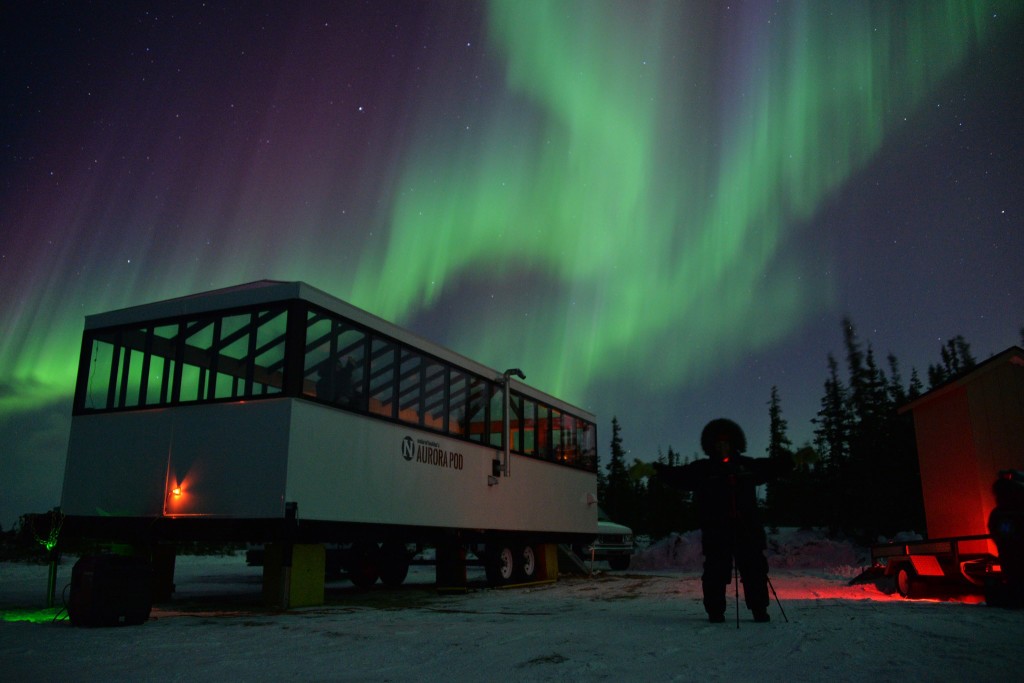
Northern lights above the aurora pod. Alex De Vries – Magnifico photo.
The view out across the frozen bay and east over the snowy Precambrian shield was an immediate fit for what we were looking for. Boreal forest behind the pod shelters from wind while scattered krumholz white spruce in the foreground provide ultimate northern lights photography options. The setting allows for alternative photo experiences in daylight as well.
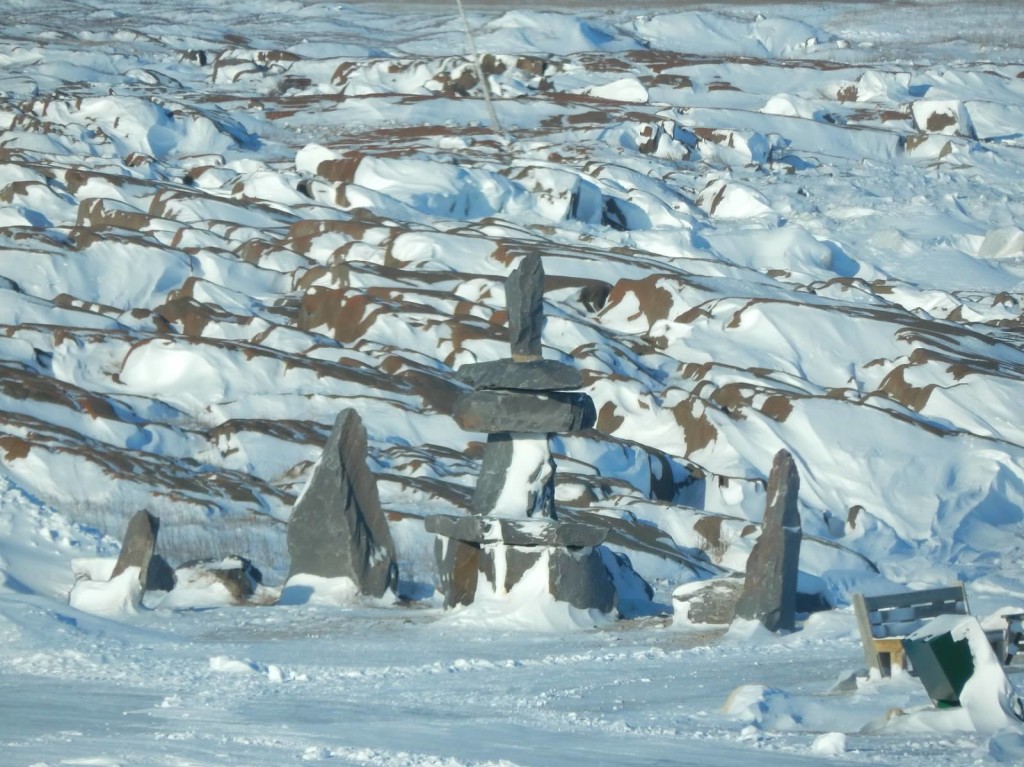
Inukshuk in the foreground with Precambrian shield in the distance. Courtesy natural Habitat Adventures.
The natural, sheltered nook in which the pod sits provides the ultimate location for taking in the incredible expanse of sea, land and sky of the sub – Arctic region. Overall the first test of the Aurora Pod was phenomenal. Travelers immediately experienced the perspective of viewing aurora borealis from the interior as well as using the ample open land surrounding the pod to set up tripods and capture the light show digitally. The effects were spectacular. Photographs of the pod lit subtly from within from the pellet stove also proved quite unique as well.
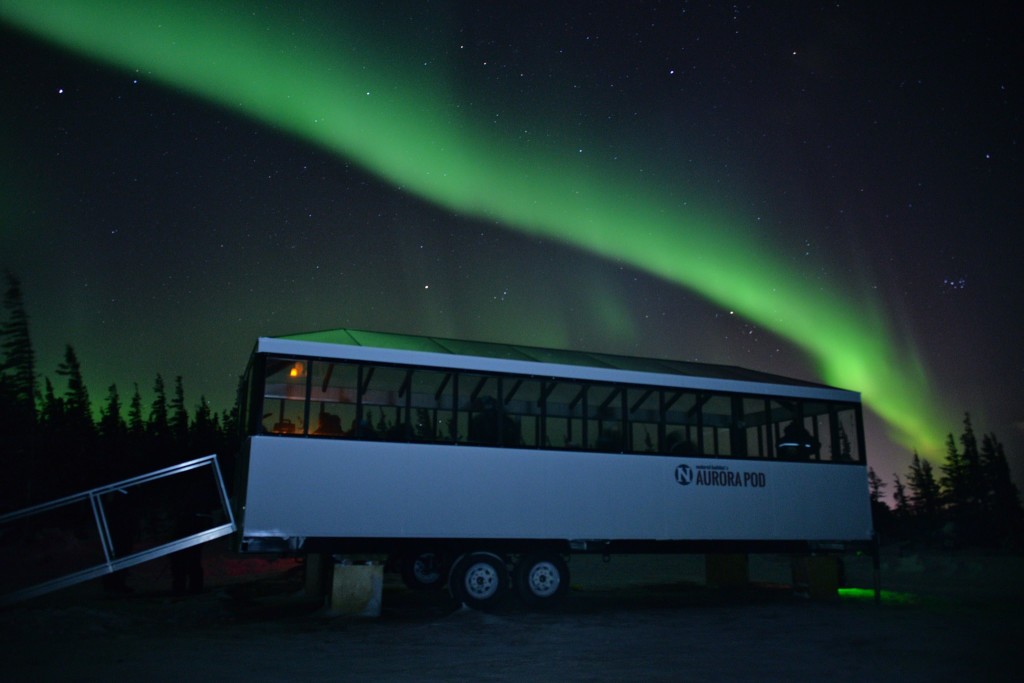
Aurora Pod with the northern lights in the distance. Alex De Vries – Magnifico photo.
Overall the conception of a portable pod from which to view the the ever changing landscape and dynamic northern lights has proved a glowing success. Natural Habitat is eager to utilize the Aurora Pod for the fall polar bear season in October and November.
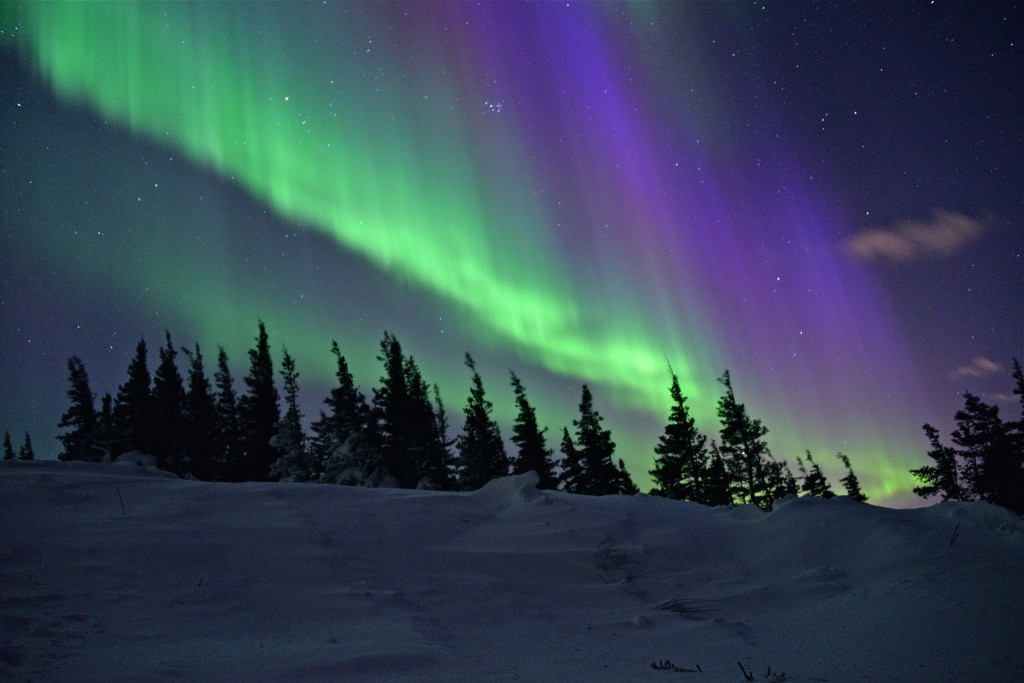
View from the south side of the Aurora Pod facing the boreal forest. Alex De Vries – Magnifico photo.
by Steve Selden | Mar 31, 2015 | Churchill News
I recently ventured back to Churchill, Manitoba for a week to help with set-up and installation of Natural Habitat’s new Aurora Pod. The project was finally nearing the end of a long process of design, production and delays and now came the time to test it all out. The time to see if all the work was worth the effort.
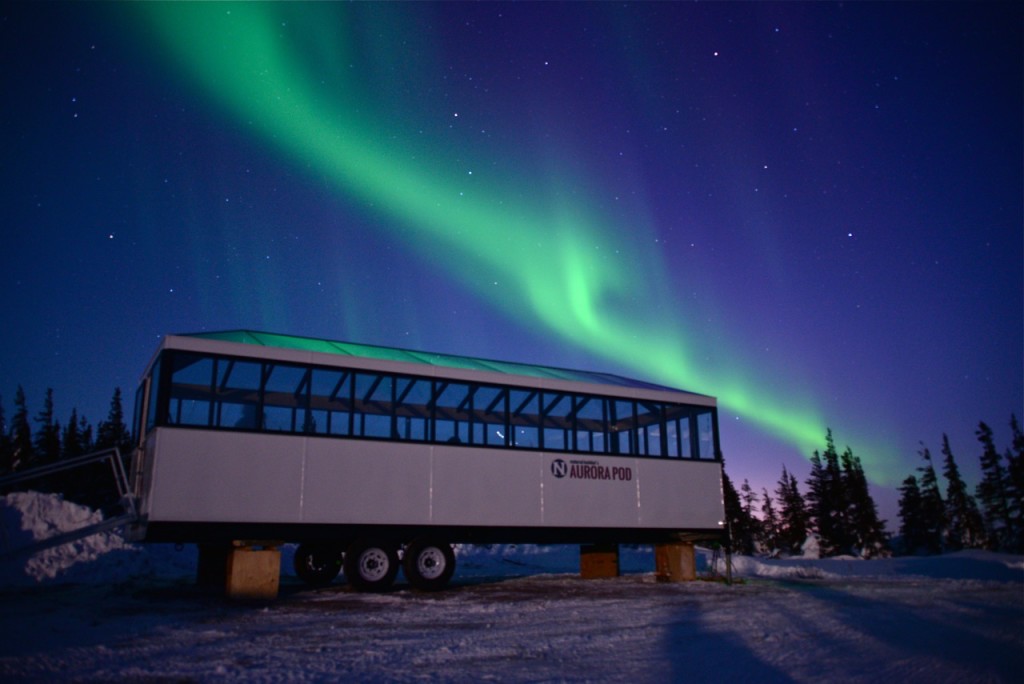
Natural Habitat’s Aurora Pod. Brad Josephs photo.
Upon arriving in Churchill and driving out to the proposed pod-site, just above the rock quarry across from the airport along the Hudson Bay coast, I knew immediately this was the place for the pod. Not a doubt.
The stillness in the frigid air froze me in my tracks as I stood just above the quarry and looked over the solid ice – packed Hudson Bay. The endless slab of ice extended north as far as I could see. To the east the Canadian shield rolled down to the edge of the rocky coast peaking through the snow where wind had whipped it clean. Stunted spruce with one – sided branches dotted the surface across the tundra and rock covered surface.

Northern lights above the boreal forest behind the Aurora Pod in Churchill. Justin Gibson photo.
Behind the pod and extending quite a distance to the west along the upland coast was a sturdy stretch of boreal forest holding fast like a battalion of soldiers guarding the bay. On my last day in Churchill I borrowed a friend’s snowshoes and made my way through the powder encrusted spruce pillars and found a wonder world of snowy silence. I worked my way through the heavy snow and came across fairly fresh wolf tracks winding their way back towards the quarry and westward along the coast. As I followed them with trepidation, I had the thrill of hoping to see the maker of these tracks and fear of doing so all at once. Eventually I turned back and left them as they disappeared over the snow covered rocky edge.
I stood one more time taking in the entire scene of boreal forest, rocky Precambrian shield and vast ice covered Hudson Bay all under a clear blue sky. As my nose hairs froze for a last time, I soaked it all in with pure pleasure. The sensation was incredible…one in all the years of working in Churchill I seemed to take for granted after some time.
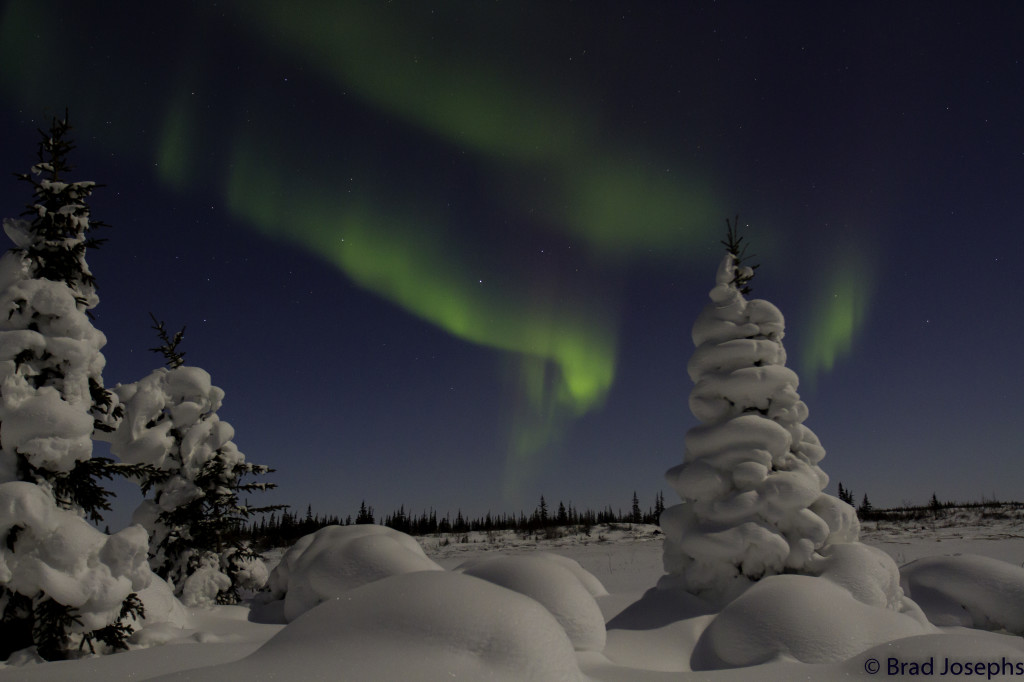
Snow encrusted trees near the Aurora Pod. Brad Josephs photo.
A couple of days earlier I had joined photographer and former operator/ owner of Sea North whale watching tours Mike Macri on a ski – do trip across the frozen Churchill River to make a last visit to his rustic cabin. Hidden in the woods, just up river and about halfway between Churchill River and Button Bay, the journey was beautiful. Mike’s selling his last couple of pieces of property and heading east to Ontario with his wife to fish and retire to some extent. It was a great way to say goodbye to one of the last pieces of the original Churchill puzzle. As we sat in the cabin warming our toes by the wood stove, eating cookies warmed by the same fire and drinking hot tea, few words were spoken. Sometimes silence says it all. Old friends saying goodbye…though hopefully not forever.
After I returned home I realized that I had taken a trip back, not only physically but consciously, to a place where I have spent a substantial part of my life. Sitting around the “local” table in Gypsy’s restaurant listening to the stories and dialogues between people I remember from long ago reminded me why I fell in love with this place to begin with. Churchillian’s speak their mind ( sometimes with some pretty flowery language) and are very real. Those qualities separate places from the vast majority of towns in the world today.
Come find your inner spirit in the incredible natural beauty of the Churchill region!
by Steve Selden | Jan 9, 2015 | Churchill News
Eskimo kissing as we know it in western culture never really happens the way it’s depicted in movies or media. The myth of Inuit or Eskimo’s kissing by touching nose to nose as a romantic gesture is only myth. The gesture is based loosely on a traditional Inuit greeting called a kunik. The Hudson Bay coast north of Churchill is predominately Inuit.

A kunik is a way of expressing affection, usually between loved ones and family members, involving pressing the nose and upper lip against the loved ones’ skin (often the forehead or cheeks ) and breathing in, causing the loved one’s skin or hair to be suctioned close to the nose and upper lip.
This practice morphed into the myth that Inuit “kissed” this way to prevent their mouths from freezing together. Nanook of the North, the infamous 1922 documentary of Inuit life in the northern regions may have spurred the myth by depicting such behavior in the film. The gesture, in actuality, is a non-erotic greeting between Inuit that often have only noses and eyes exposed due to the severity of the cold weather in the northern region.

Would you give a polar bear an Eskimo kiss? Brad Josephs photo.
Yes Inuits kiss on the lips just like most other people in the world. With all the flu viruses circulating around the west, especially in wintertime, maybe we all should adopt the kunik during those contagious times.
Hope you enjoy this northern culture video from Blick Van Glory. Eskimo Love Song is their second music video that was produced in 2008.










